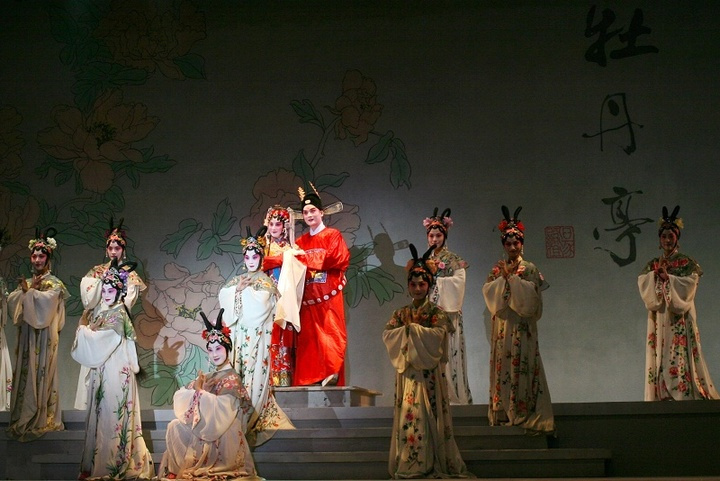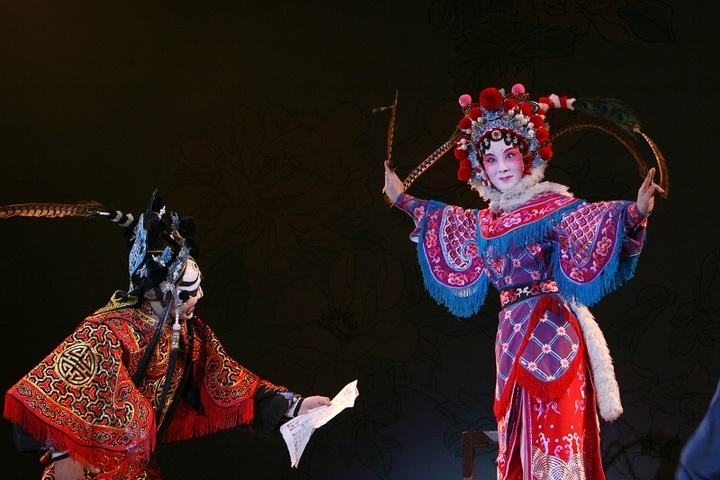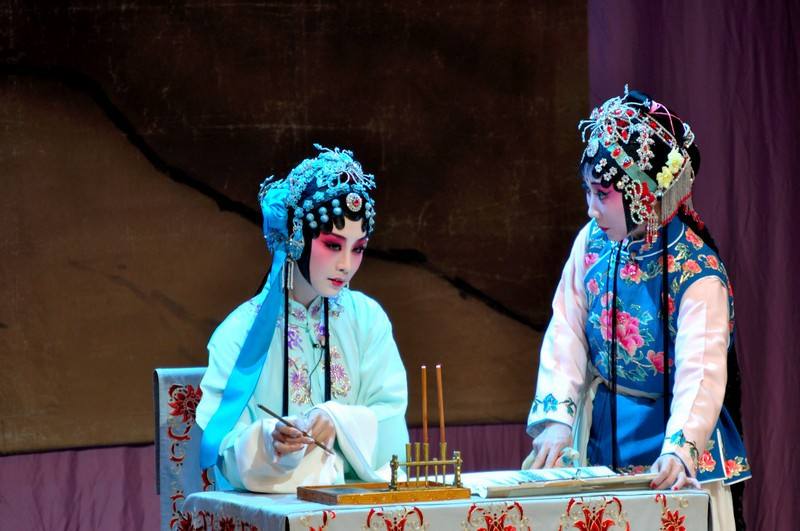Origins and Emergence
5 min readKunqu opera emerged as a new dramatic art form during the Ming Dynasty (1368-1644 AD). Starting in the late 16th century, it gradually claimed a central role on the Chinese stage, to become the most important performing art of the next two hundred years. The lengthy period from Kunqu opera’s earli-est origins to its emergence as an established art form may be referred to the pre-Kunqu era.

According to currently available references,a new kind of regional opera suddenly appeared in Yongjia, Zhejiang Province during the Guangzong reign period(1190-1194 AD) of the Southern Song Dy-nasty(1127-1276 AD). Its melodies were drawn primarily from southern folk music, so it was called Southern opera. Southern opera retained many aspects of folk art, and was entirely unconstrained by bureaucratic rules and regulations. Performances were free and lively, characterized by extensive improvisation. As it developed, Southern opera incorporated various established traditional musical forms of the Tang-Song period (618-1276 AD), becoming increasingly rich and refined. However, due to lack of participation by China’s upper class literati, this art form was unable to develop beyond itsinherent and acquired limitations. As a result, it was inevitable that Southern opera remained stalled at a certain level.
Ming dynasty opera performers, Qing Dynasty(1636-1911 AD)
During the early years of the Ming Dynasty (1368-1644 AD), Southern opera integrated invaluable artistic elements from northern China’s Zaju opera,a type of vocal drama set to music.A number of outstanding literati also started to contribute their efforts to the genre. As a result, Southern opera gained an entirely new appearance. Zhu Yuanzhang(r.1368-1398 AD), the first emperor of the Ming Dynasty, had the opportunity to read the script of the Southern opera Pipa Ji(The Story of the Pipa), by Gao Ming (?-1359 AD). Highly impressed, he called for the opera to be performed at the palace. Itcan be seen that by the early Ming Dynasty, Southern opera had entered a more elegant artistic realm, thus gaining the accolades and support of China’s upper classes.

Southern opera’s ability to develop so rapidly was intimately connected to the adaptability of the art form. The essence of this adaptability was most apparent in the rapid evolution of its vocal music.
From the Southern Song Dynasty to the Ming Dynasty, Southern opera spread through many different regions. As it absorbed the influence of local dialects and folk music, it developed many different re-gional styles. Kunshanqiang, the regional opera that resulted from the fusion of Southern opera with the music of the Kunshan region of Jiangsu Province and the local Wu dialect, was the precursor of Kunqu opera.
It is important to note that early Kunshanqiang consisted merely of vocal music with no instrumental accompaniment and complete plot.Prior to the mid-Ming Dynasty,Kunshanqiang had not spread very far,and was popular only in the Suzhou region.At this time,Suzhou was southeastern China’s major urban center,unparalleled in both economics and culture.Along with economic prosperity came de-velopment in culture and the arts.It was against this backdrop that Kunqu opera made its way to cen-
ter stage in Chinese culture and society.
Terracotta figure of Zaju opera performer;
Yuan Dynasty(1271-1368AD)
The development of Kunqu opera’s latent potential into a major vocal performing art form may be attributed to folk musician Wei Liangfu(c.mid-16th century AD).Born in Yuzhang,Jiangxi Province,he spent many years in the port city of Taicang making his living as a performer of folk music.Here he came into contact with many styles of music from both northern and southern China.After extensive comparative study,he became increasingly dissatisfied with Kunshanqiang’s comparatively simple and unvarying melodies.As a result,he and some close colleagues undertook a comprehensive reform of the genre.
The reform of Kunshanqiang encompassed both vocal and instrumental music.Wei Liangfu and his collaborators collected the best aspects of various styles of northern and southern music,merging them with popular southern folk songs to create a totally new type of melody.The new vocal style em-phasized coordinating the tone pattern of the lyrics with the melody,drawing the syllables out to create a slow and relaxed rhythm.This unique form of musical enjoyment would pass down to later genera-
tions as Kunqu opera.
Scene from Kunqu opera
Huansha Ji(Washing the Silken Gauze),New Year print;Qing Dynasty(1636-1911 AD)The reformed Kunqu melodies were highly popular,bringing Wei Liangfu great acclaim.As soon as the new art form was introduced,its unique artistic charm conquered audiences everywhere.Folk mu-sicians came from all over to study Kunqu performance techniques with Wei Liangfu,resulting in its rapid spread throughout the surrounding regions. Within a short time, Kunqu became the new popular form of vocal folk music. At this time, there was no dramatic performance involved.

Liang Chenyu(c.1521-1594 AD) of Kunshan, Jiangsu Province collaborated with a number of folk musicians to add dramatic performance to Wei Liangfu’s reformed Kunqu music. His work Huansha Ji(Washing the Silken Gauze) is the most outstanding opera of the early Kunqu period.
Kunqu opera HuanshaJi:
Jizi(Washing the Silken Gauze: Entrusting the Son), performance still
Huansha Ji(Washing the Silken Gauze) has forty-five scenes. Set during China’s Spring and Autumn Period, it tells the story of the struggle for hegemony between the States of Wu and Yue. This work is a profound meditation on the historical forces governing the rise and fall of feudal states.(See Appendix for plot synopsis.) It is characterized by its comprehensive structure, complex storyline, well-defined characters, and elegant and lyrical libretto. The musical score blends seamlessly with the plot, withmany creative musical passages serving to further emphasize the dramatic effect. Following the pro-duction of Huansha Ji(Washing the Silken Gauze), many of its arias became popular throughout society.
In this way, Kunqu opera started to become part of the life of the common people.
As a result of Wei Liangfu’s reforms and Liang Chenyu’s artistic vision, Kunqu opera became increas-ingly influential, spreading throughout Jiangsu and Zhejiang provinces to become the primary dra-matic art form of the region.








